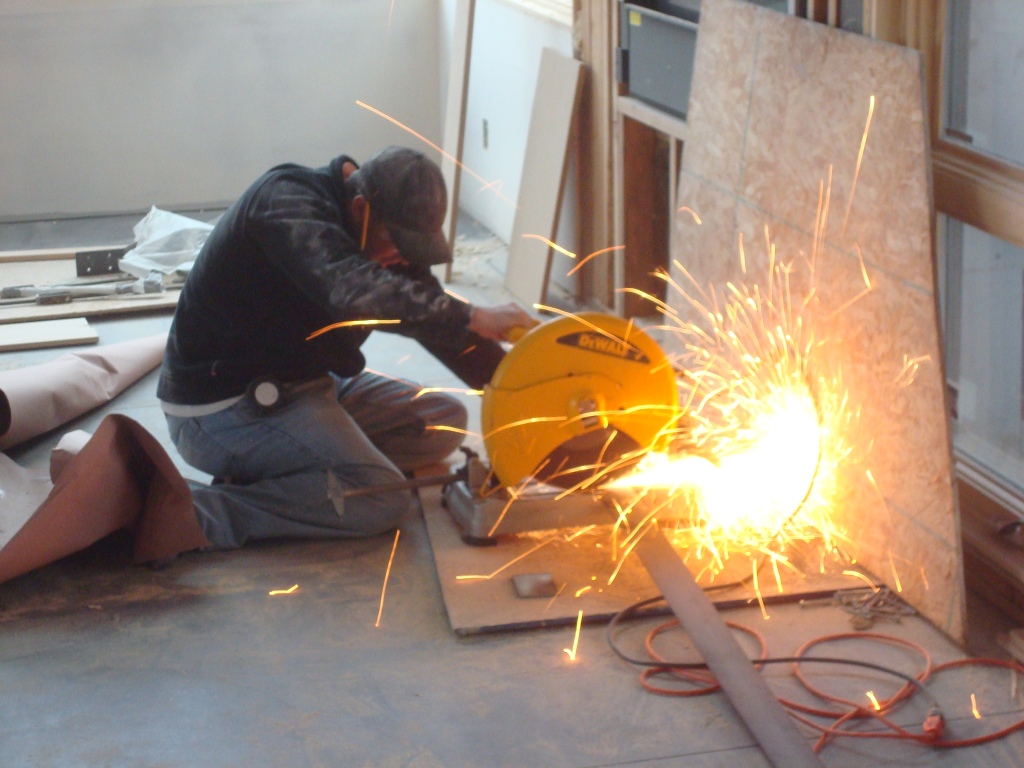The cold-rolled steel roof has oxidized nicely over the fall and winter. It looks pretty good. Most of the steel siding is starting to turn as well, but it is pretty well protected from water, and with temperatures mostly below 50F, the oxidation rate is slow. Still, I’m pretty sure that by the end of the summer, most of the steel siding will have a decent patina on it.
However, the steel panels on the front of the house are very well protected. They basically never get wet. By mid-Spring they were looking pristine. So, I decided I would accelerate the process. Here is the siding in that area before I did anything…

I mixed 1/4 muriatic acid (standard stuff at Home Depot) with 3/4 tap water in a spray bottle. (Be very careful. Muriatic acid is, well, acid. It really does burn your skin and can destroy your eyes, too. Gloves and safety glasses/goggles are essential.) I simply misted the entire wall surface with the spray bottle. In 24 hours, as long as the temperature is above about 50F, the entire surface will be very rusted. You can see where you have missed spots and just hit those again. I’ll be curious to see how the accelerated oxidation compares in color to that of the naturally oxidized surface. You can already see that where water has bounced onto the wall, the surface is more orange. Anyway, I’m pretty happy with the results. I would be curious to know if an even milder acid would work (e.g., white vinegar). I bet it would, especially if the temperatures were a bit higher.
Continue reading




